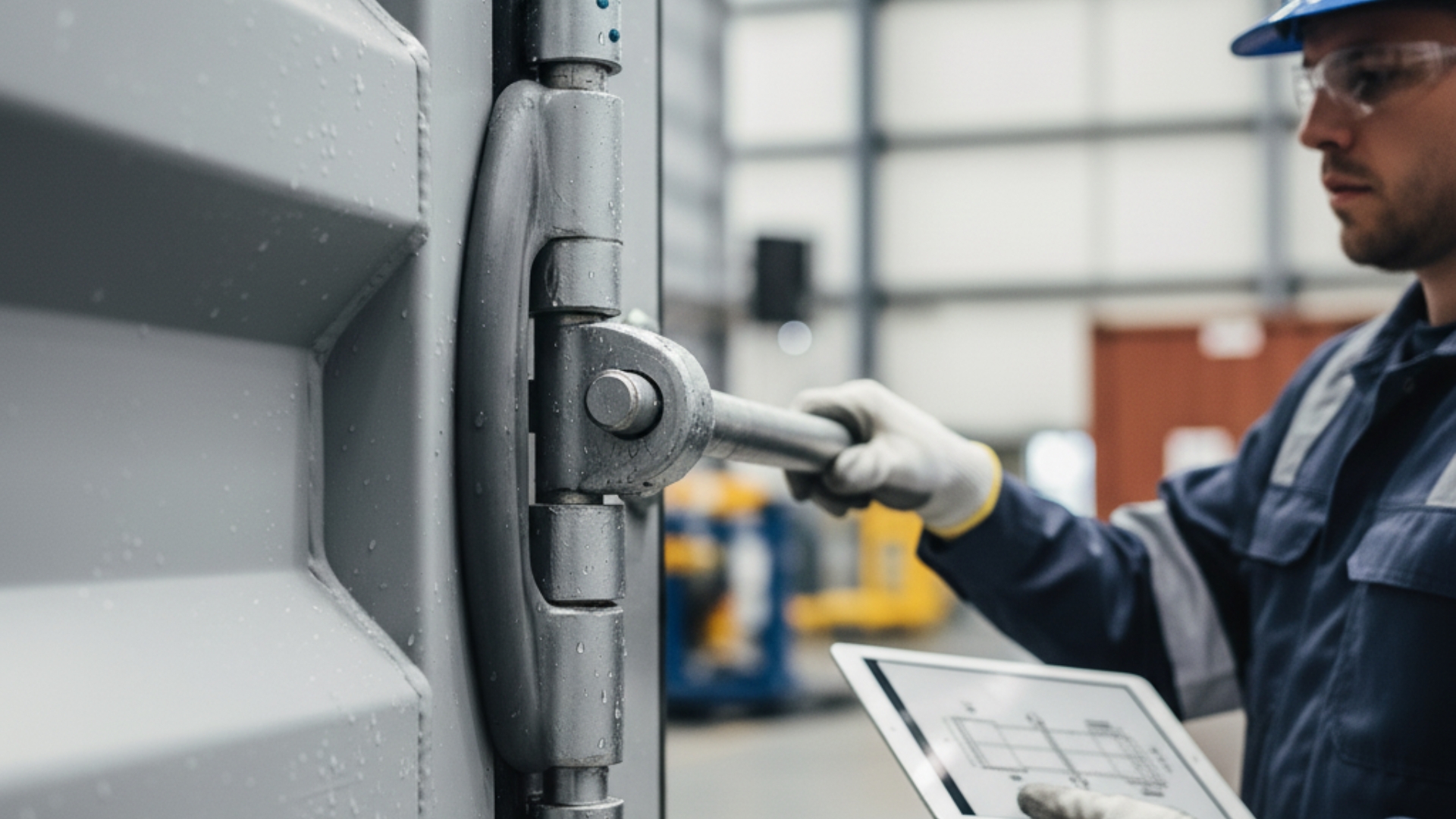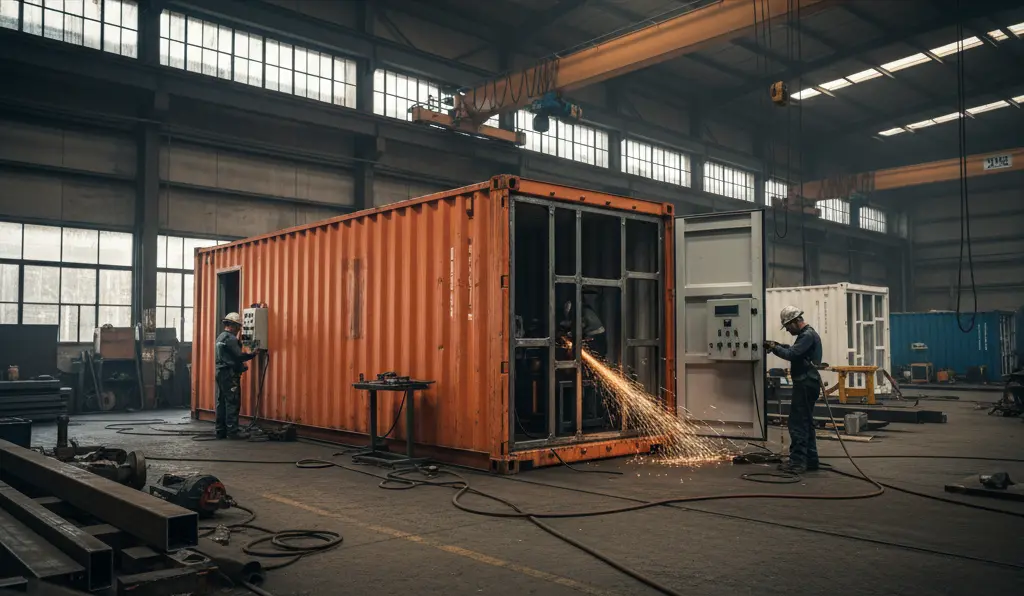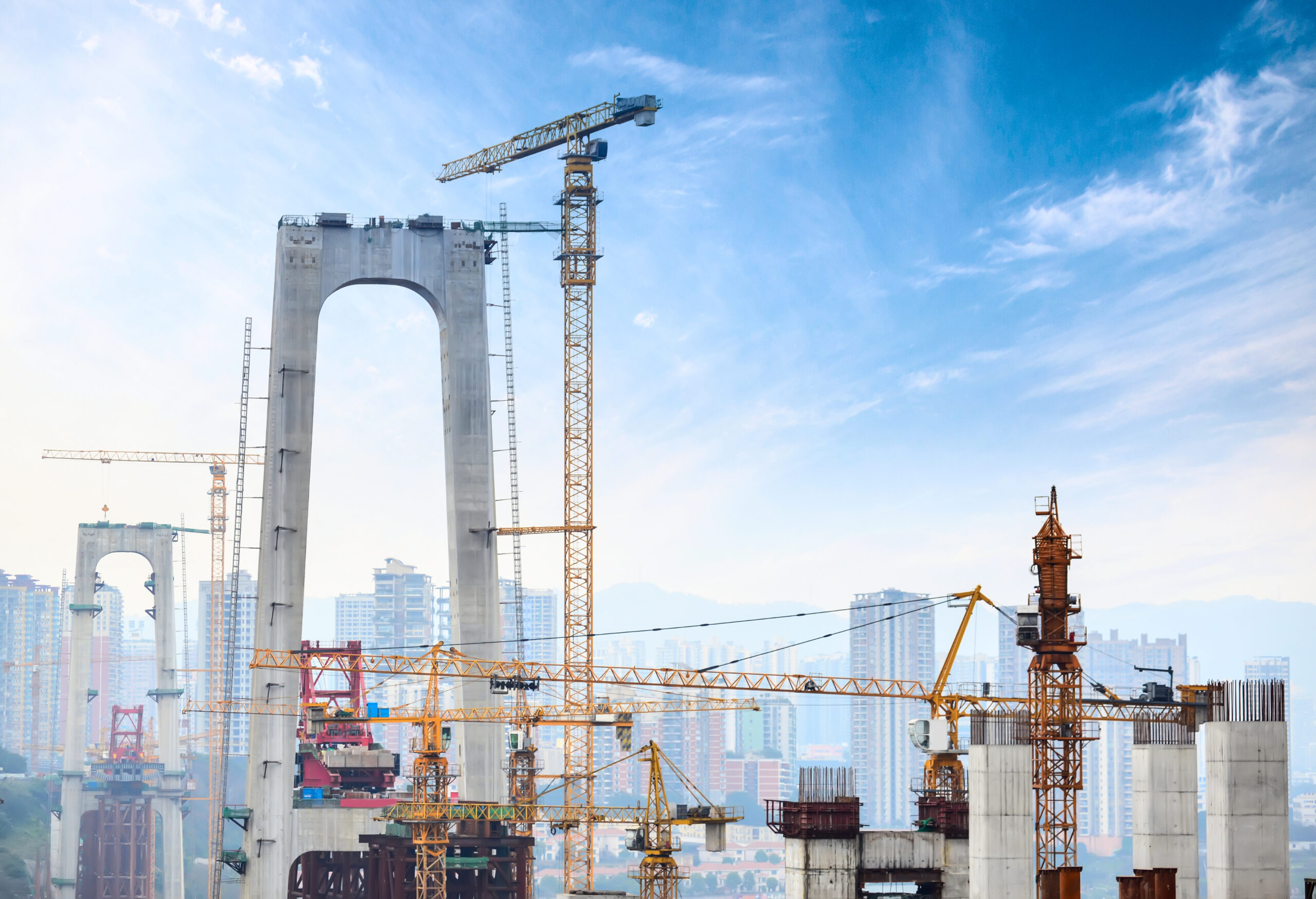Offshore and industrial operations demand equipment that performs flawlessly under extreme conditions. Containers certified under DNV 2.7-1 standards are widely trusted in oil and gas, marine, and heavy industry because they undergo a series of rigorous inspections before delivery.
These tests are more than routine checks. They are designed to ensure structural integrity, safety, watertightness, and long-term durability. In this guide, we will explore the common tests for DNV containers, the methods behind them, and why they are essential for global compliance and operational safety.
1. Welding Integrity Test: The Core of Structural Strength
Welding is the backbone of any offshore container. A single weak weld can compromise the entire structure and lead to costly failures or safety hazards.
How it works:
- Visual Inspection: Inspectors check every weld for visible cracks, uneven joints, or porosity.
- Non-Destructive Testing (NDT): Methods such as ultrasonic testing, X-ray inspection, and magnetic particle testing detect flaws hidden inside the weld metal.
Why it matters:
- Prevents structural failures during heavy lifting or offshore handling.
- Ensures compliance with DNV safety standards.
- Reduces costs by identifying defects early in production.
When performed: Immediately after the welding process, before final assembly, so issues can be corrected quickly.
2. Lifting Test: Simulating Extreme Handling Forces
DNV containers must be lifted repeatedly in harsh offshore environments, often in high winds or unstable sea conditions. The lifting test verifies their ability to endure these forces safely.
How it works:
- Load Test: Containers are subjected to forces greater than their rated load capacity. This simulates extreme handling conditions.
- Lifting Point Inspection: Pad eyes, lifting lugs, and shackles are tested, as these areas bear the most stress during crane operations.
Why it matters:
- Confirms that containers can withstand real-world stresses.
- Provides assurance for safe crane handling in offshore platforms, ships, and terminals.
- Reduces the risk of accidents, cargo loss, or operational downtime.
When performed: After welding and assembly but before painting or coating, while the structure is still bare steel.
Also Read : https://www.albasatauae.com/padeye-design-and-certification-in-offshore-containers-a-guide-for-safe-and-compliant-lifting/
3. Watertightness Test: Protection Against Environmental Hazards
Containers used offshore face constant exposure to water, rain, and high humidity. Even a minor leak can damage sensitive equipment or cause corrosion.
How it works:
- Rain Simulation: High-pressure water jets replicate heavy rainfall or sea spray, targeting weak points like doors and vents.
- Seal Integrity Check: Door gaskets, welded seams, and joints are inspected for leaks.
Why it matters:
- Protects cargo from moisture damage.
- Prevents corrosion inside the container.
- Ensures compliance with offshore industry requirements.
When performed: After seals are installed but before final painting, making it easier to detect and repair leaks.
4. Coating and Paint Test: Defending Against Corrosion
The paint on a DNV container is more than cosmetic. It is the container’s first line of defense against corrosion in marine and industrial environments.
How it works:
- Adhesion Test: Cross-cut or pull-off methods are used to confirm that the paint bonds effectively to the surface.
- Film Thickness Measurement: Gauges are used to ensure the protective coating is applied to the required thickness.
- Visual Inspection: Surfaces are checked for bubbles, cracks, or peeling that could weaken protection.
Why it matters:
- Extends the service life of containers.
- Reduces long-term maintenance costs.
- Ensures compliance with offshore quality standards.
When performed: After painting and curing, before the container is approved for delivery.
Why These Tests Are Critical
1. Safety
Offshore and industrial sites are among the most hazardous working environments. Heavy cranes, rough seas, and unpredictable weather create constant risks. A container that has not passed proper testing can fail during lifting or transport, putting workers’ lives in danger and causing serious accidents. By ensuring every weld, seal, and lifting point is tested, these inspections protect both people and valuable equipment.
2. Reliability
Operators depend on containers to perform consistently under pressure, whether that means carrying heavy machinery or sensitive equipment. If a container fails in the middle of an operation, it can disrupt schedules, delay projects, and damage expensive cargo. Reliability testing ensures containers remain structurally sound and watertight across repeated use in extreme conditions, giving operators confidence in day-to-day operations.
3. Compliance
DNV 2.7-1 is an internationally recognized certification standard. Meeting these requirements is not optional for offshore and industrial suppliers; it is often a legal and contractual necessity. Passing the common tests for DNV containers ensures that units can be deployed anywhere in the world without regulatory issues. Compliance also demonstrates that the supplier follows global best practices, strengthening trust with clients and regulators.
4. Cost Efficiency
A failed container can mean more than just the cost of replacement. It can cause damage to cargo, halt offshore projects, or lead to penalties for downtime. Preventive testing saves money in the long run by reducing the risk of failures and minimizing maintenance needs. Well-tested containers last longer, perform better, and lower the total cost of ownership for businesses that rely on them.
Conclusion
The common tests for DNV containers, including welding integrity, lifting resilience, watertightness, and coating quality, form the foundation of offshore safety and reliability. Each test plays a unique role in ensuring that containers are not only certified but also capable of performing in the world’s harshest environments.
For businesses in offshore logistics, oil and gas, or heavy industry, understanding these tests means investing in containers that deliver long-term safety and performance.




